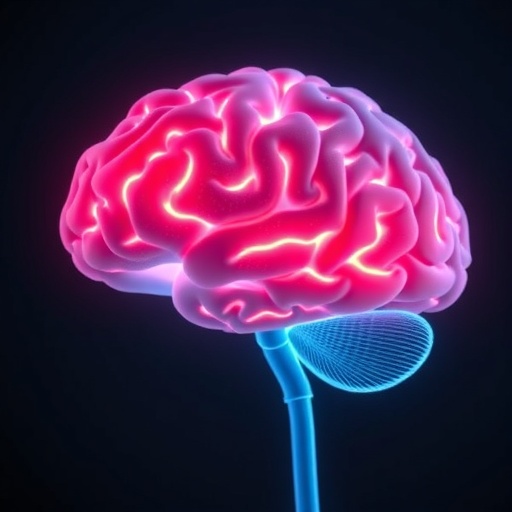In a groundbreaking study poised to redefine our understanding of adolescent mental health, researchers have uncovered critical alterations in brain structure and connectivity in young individuals engaged in non-suicidal self-injury (NSSI). These findings not only illuminate the neurological consequences of psychosocial adversity but also reveal a compelling link to changes in pain perception, offering fresh insights into the complex neurobiological underpinnings of self-injurious behavior.
Non-suicidal self-injury, characterized by deliberate harm to oneself without suicidal intent, affects a significant proportion of adolescents globally and has long been a focus of clinical concern. While psychosocial stressors such as childhood trauma and peer bullying have been identified as pivotal risk factors, the intricate mechanisms by which these experiences manifest in the brain have remained elusive. This study bridges that gap by meticulously mapping cortical structural changes alongside alterations in brain networks, specifically in adolescents diagnosed with NSSI.
Utilizing high-resolution magnetic resonance imaging (MRI), the investigative team conducted an extensive analysis of 44 adolescents with documented NSSI and compared them with 37 healthy controls. The researchers quantified cortical thickness (CT) and cortical surface area (CSA) across various brain regions to build a comprehensive structural covariance network—an approach that captures how different cortical regions structurally co-vary and potentially share functional relationships.
The analysis revealed a conspicuous reduction in cortical thickness in the right cingulate isthmus cortex among the NSSI group. This brain region, implicated in emotional regulation and pain processing, demonstrated a striking negative correlation not only with the severity of peer bullying and childhood trauma but also with bilateral pain tolerance. These findings suggest that adverse social experiences might directly reshape brain morphology, influencing how pain is perceived and processed.
Beyond regional cortical changes, the study delved into network-level alterations revealing diminished global connectivity metrics in NSSI adolescents. Notably, nodal betweenness centrality—a measure of a brain region’s influence over information flow—was significantly reduced in the rostral left middle frontal gyrus based on cortical thickness data. This decrease was closely associated with the extent of childhood trauma endured, indicating that traumatic experiences may disrupt key hubs responsible for executive functions and emotion regulation.
In contrast, an intriguing increase in nodal degree centrality, reflecting the number of connections a region maintains, was observed in the left lingual gyrus based on cortical surface area measurements. This heightened connectivity correlated specifically with physical bullying experiences, underscoring the nuanced ways different psychosocial adversities uniquely impact distinct neural architectures.
Collectively, these structural and network abnormalities underscore a dual influence of environmental stressors and altered somatosensory processing in the pathophysiology of NSSI. The diminished pain sensitivity observed among these adolescents aligns with prior behavioral reports of pain hyposensitivity in self-injuring individuals, suggesting a neurobiological adaptation or desensitization that may perpetuate harmful behaviors.
This research advances a holistic view of NSSI by positioning it at the intersection of social adversity, neurostructural changes, and altered sensory experiences. It challenges clinicians and neuroscientists alike to consider how psychosocial factors intricately mold brain architecture, potentially creating vulnerabilities that predispose adolescents to engage in self-injury.
Importantly, these insights hold promise for developing targeted interventions aimed at restoring network integrity or modulating sensory processing pathways. Future studies might explore whether therapeutic approaches such as neurofeedback, cognitive behavioral therapy, or neuromodulation can reverse or mitigate these cortical and network alterations, thereby reducing the risk of persistent self-injurious behavior.
Moreover, the identification of specific brain regions and network properties affected by distinct types of psychosocial adversity highlights the need for personalized treatment strategies. Understanding that childhood trauma and peer bullying exert differential impacts on neural circuits opens avenues for tailored psychosocial and neurobiological interventions.
This study also sets a precedent for incorporating advanced neuroimaging techniques in adolescent mental health research, providing a robust framework for exploring other psychiatric conditions where pain perception and social stressors play a role. By detailing the neuroanatomical pathways linking environment, behavior, and brain function, the work enriches the conceptual models of psychopathology in youth.
As non-suicidal self-injury continues to present a pressing public health challenge, these findings underscore the urgency of integrating neurobiological insights with psychosocial support systems. The intricate brain alterations observed here reveal not only the profound impact of adverse experiences but also the brain’s vulnerability during critical developmental windows—information vital for shaping prevention and intervention efforts globally.
In essence, this innovative study marks a seminal step toward unraveling the complex dialogue between brain structure and social adversity in adolescents grappling with NSSI. It heralds a future where neuroscience and mental health care converge to address the root causes of self-injurious behavior through precise, informed, and compassionate approaches.
Subject of Research:
Neurobiological alterations in cortical structure and network connectivity linked to psychosocial adversity and pain hyposensitivity in adolescents exhibiting non-suicidal self-injury.
Article Title:
Altered cortical structure and networks associated with psychosocial adversity and pain hyposensitivity in adolescents with non-suicidal self-injury
Article References:
Zhao, G., Zheng, J., Li, Y. et al. Altered cortical structure and networks associated with psychosocial adversity and pain hyposensitivity in adolescents with non-suicidal self-injury. BMC Psychiatry (2025). https://doi.org/10.1186/s12888-025-07606-5
Image Credits:
AI Generated




